Description
The FTL is a test block for interfacing substation devices (protection relays, fault recorders, revenue meters, ... ) to the voltage and current transformers and to other equipment on the system side of a power grid.
The FTL test block uses disconnect pins to isolate the substation devices from the system side equipment. Once isolated, secondary injection can be performed using banana jacks on the front side of the test block.
Principle of Operation
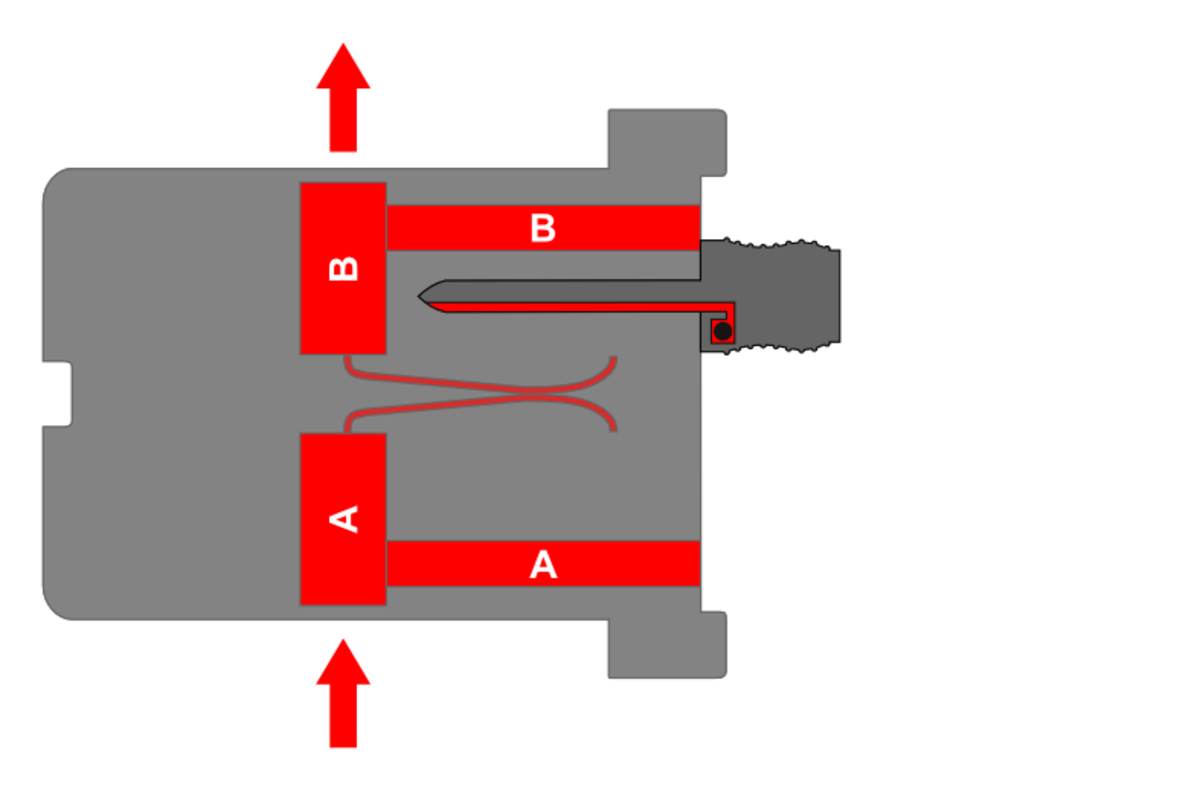 Closed circuit
Closed circuitA FTL test block contains 8, 10, 12, 14, 16, 18 or 20 modular units (or poles) each allocated to a current, voltage, signal or trip circuit. Each circuit is connected through the block via two silver-plated copper contacts, pressed securely together by two pressure springs to create a highly conductive electrical connection. In this situation, a electrical connection is established between the device side (B) and the system side (A).
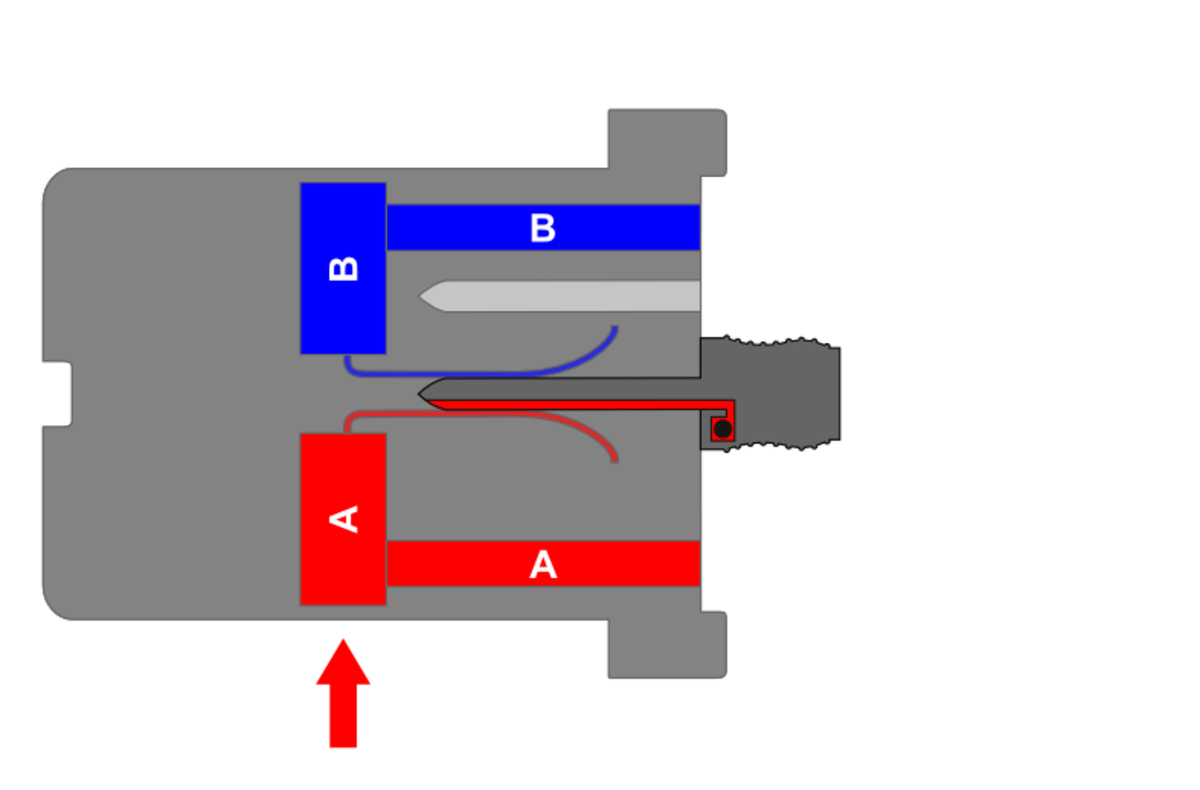 Open Circuit
Open CircuitTo open one of these modular poles, a disconnect pin is removed from its inactive "parking" position and inserted between the silver-coated copper contacts (the "test" position). In this position, the device and system sides of the test block are isolated from each other. For current circuits, the disconnect pins include internal shorting bridges.
When the pin is moved back to the "parking" position, the internal springs force the contacts back together, returning the circuit to its normally-closed position. There is no in-between position, completely eliminating the risk of accidents resulting from improperly closed circuits.
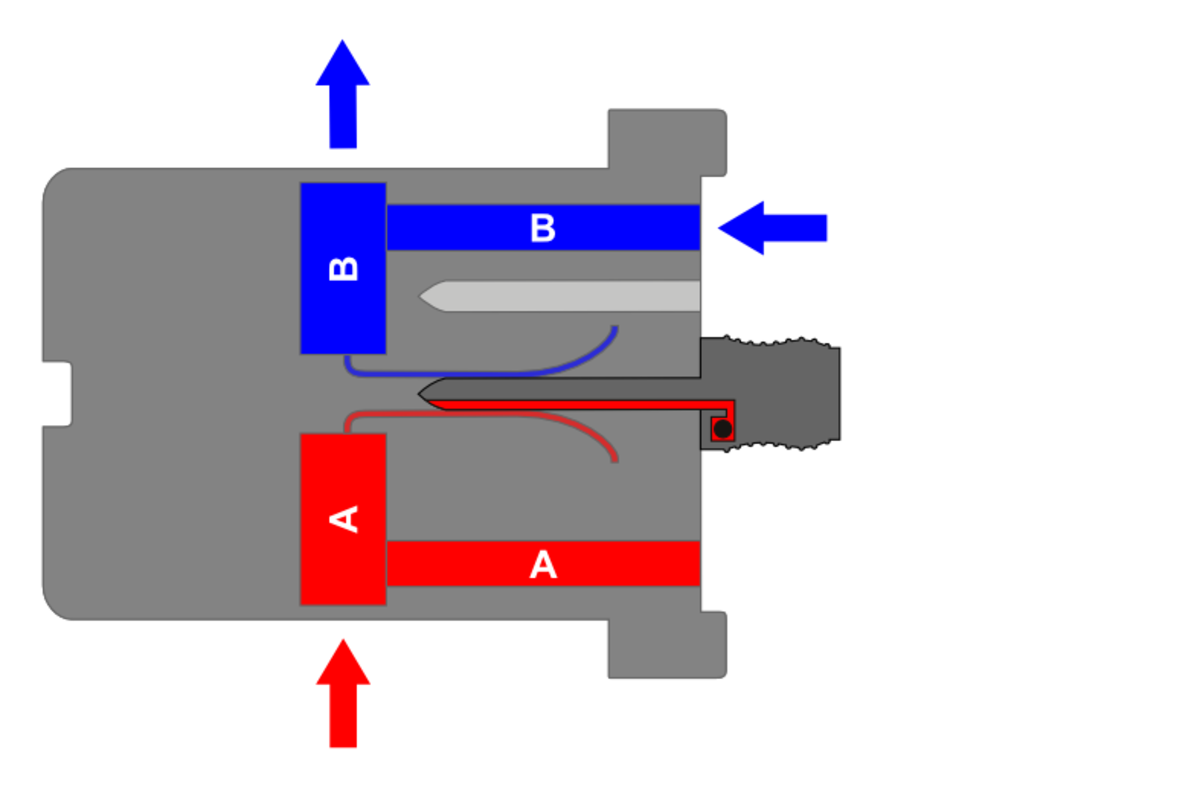 Signal Injection
Signal InjectionWhen the disconnect pin is in the "test" position, a banana jack is accessible on the device side of the test block, allowing the connection of a test set and the associated signal injection. The banana jack on the system side is optional, but it is always accessible, if present.
Accessories
 Adapters for use with Insulated Banana Plugs
Adapters for use with Insulated Banana PlugsAllows the connection of test equipment with insulated banana plugs to the FTL test block (width of the insulated banana plug less than 11.5 mm)
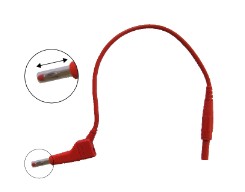 Adapters for use with Wide Test Leads
Adapters for use with Wide Test LeadsThis adapter is built for the connection of test equipment with relatively wide insulated banana plugs (width of 11.5 mm or more) to the FTL test block. One side of the adapter connects to the wide test lead and then connects via a short cable to a smaller banana plug that fits comfortably into the FTL banana jacks. The banana plug in the adapter assembly has a see-through plastic shielding that recedes when entered into the FTL banana jack.
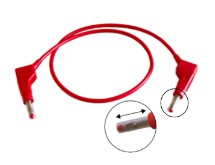 Jumper Cable
Jumper CableThis jumper cable allows the connection between 2 poles of the FTL test block. Both banana plugs of the jumper cable have a see-through plastic shielding that recedes when entered into the FTL banana jack.
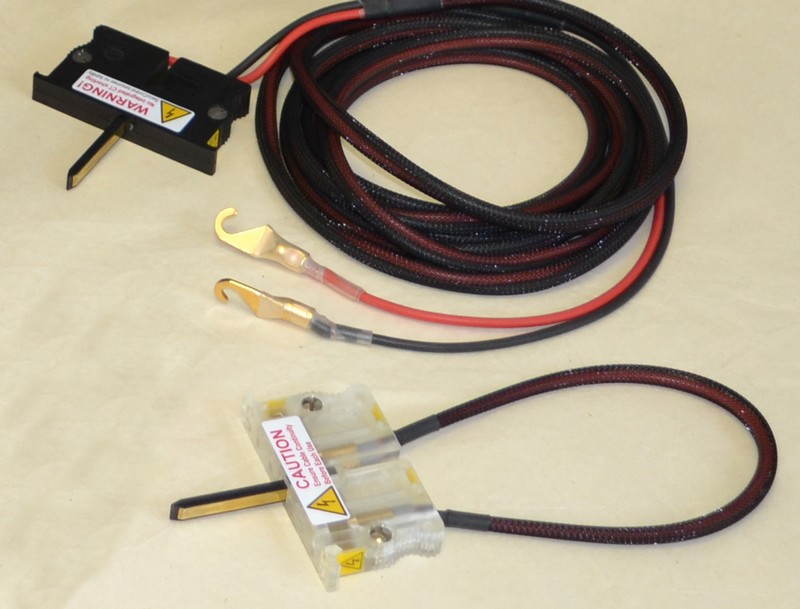 Current Measurement Probe
Current Measurement ProbeThis special test probe allows the connection of current measurement device or a shunt. The AWG 13 (2.5 mm) connection cable has a length of 118.11 inch (3 meters). The test probe are available with c-hook terminals or banana plugs at the tip of the cable.
 FTL 19´´ Rack Plates
FTL 19´´ Rack PlatesSecuControl offers metal plates for installation of FTL test blocks in 19” racks that come painted in various colors and with various cutouts for LTB test blocks, in standard heights of 2U or 3U.
Please consult our manual on the download section of this site for ordering information.
 ST Switch
ST Switch
 Drawout Case Test Plug
Drawout Case Test Plug
 FTL
FTL
 LTS
LTS
 ITS / STP
ITS / STP
 FTS / FTP
FTS / FTP
 LTB / LTP
LTB / LTP
 SAX / PAX
SAX / PAX














 Closed circuit
Closed circuit Open Circuit
Open Circuit Signal Injection
Signal Injection Adapters for use with Insulated Banana Plugs
Adapters for use with Insulated Banana Plugs Adapters for use with Wide Test Leads
Adapters for use with Wide Test Leads Jumper Cable
Jumper Cable Current Measurement Probe
Current Measurement Probe FTL 19´´ Rack Plates
FTL 19´´ Rack Plates





